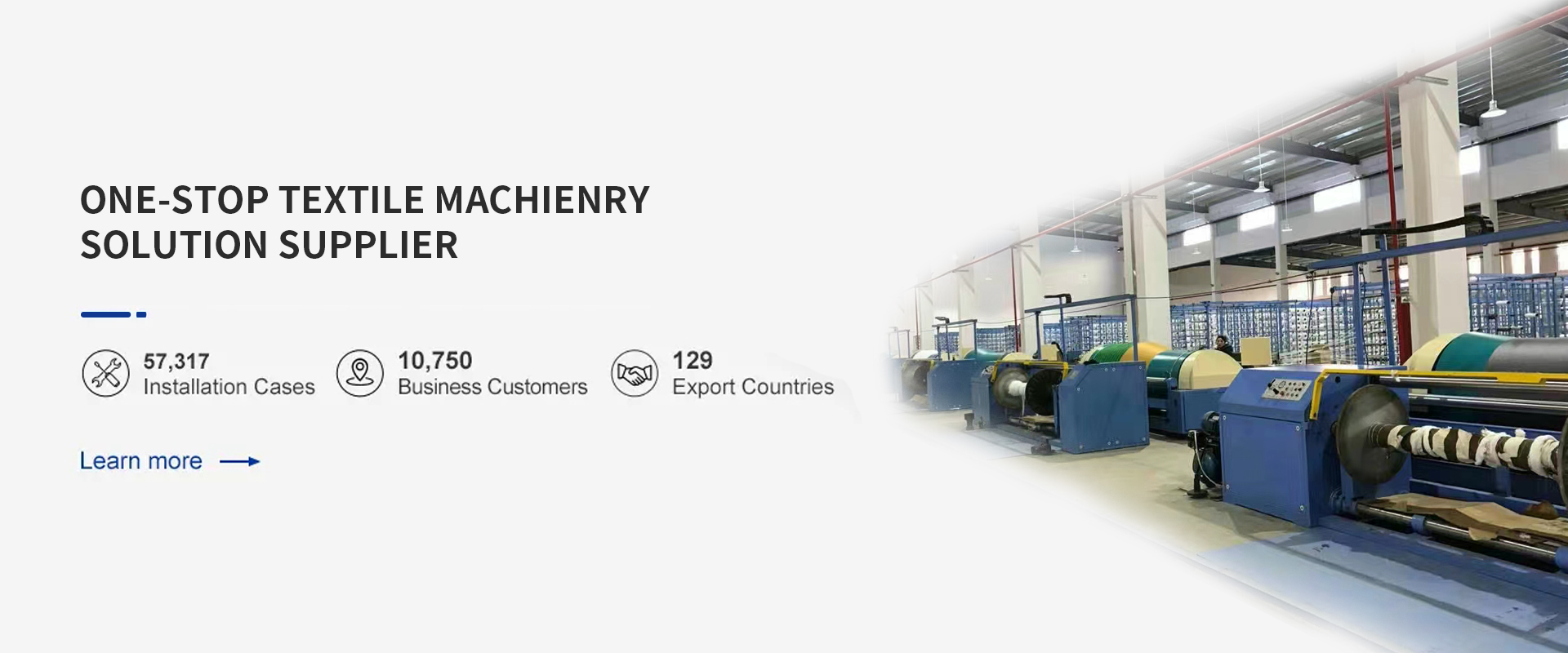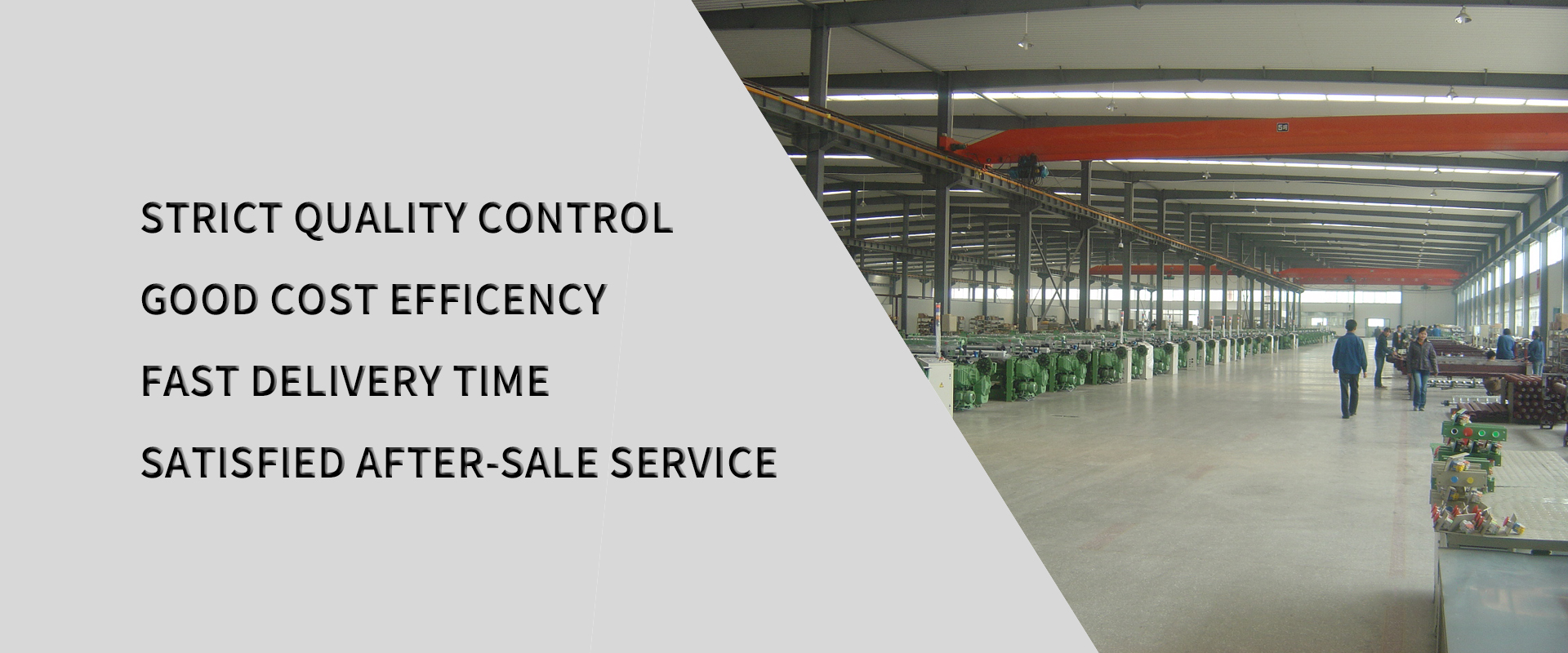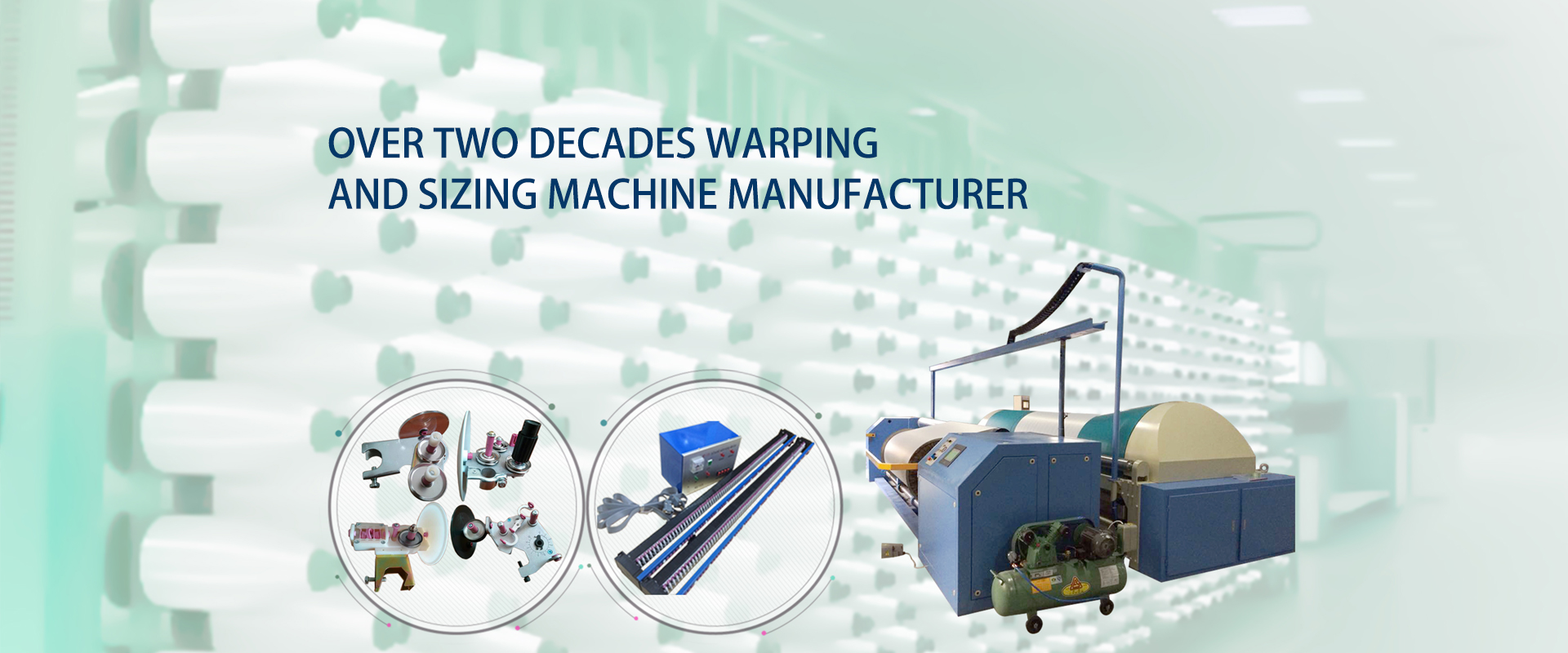After the rise of online e-commerce, a "small single quick reaction" model has been formed, which has had a new impact on the entire textile industry. Originally, weaving mills and garment manufacturers wanted to be able to produce large quantities of a single variety. But now it needs to be produced in small orders and small quantities.#warping machine For the entire industry, before the rapid response of intelligent manufacturing is truly formed, the production line cannot respond as quickly as it wants. If you want to respond quickly, you need to have a link that must bear the inventory, and there are a large number of varieties to choose from in the inventory, so that the "small single quick reaction" model can be realized through the downstream. Such inventory is also a pressure on the entire industrial chain. #warping machine

To sum up, for the textile industry, the first pain point is the lack of digital management of production enterprises, the production efficiency is not high, the operating rate is not high, the profit is relatively low, and the per capita output value is not high; The second pain point is that the trend of small orders and fast reversal has formed a#warping machine pressure on the entire industry chain; The third pain point is that for the core link such as primary wholesalers, financial tools cannot be used to adjust inventory, and market demand cannot be more accurately understood.

Big Orange Finance: On the one hand, the operating rate of factories is insufficient, and their inventory or what they produce may not meet the needs of the market. On the other hand, the market demand is the rapid response of "small single quick reaction", but after the transmission of the industrial chain, there may be no way to meet such#warping machine demand in time to the factory. We also learned that the number of employees in the entire industrial chain exceeds 170 million, but the gross profit margin of the textile industry is relatively low, is the income of enterprise workers not high?
Guan Ruifeng: Although the textile factories are not in big cities, they are still concentrated in some fourth- and fifth-tier cities or towns in Jiangsu, Zhejiang and Guangdong. The wage level in these places is relatively high, for example, a good weaver "car stopper" may earn 10,000 yuan or more per month.
From the point of view of the boss of the textile enterprise, on the one hand, the profit margin may be very low, on the other hand, his expenditure on labor is constantly growing, from the perspective of the market economy,#warping machine if the wages are not in place, the workers will be lost. Especially for skilled workers, many factories are asking for a wage increase, so the wage level of workers is gradually going up, and in this industry it is the boss who begs the workers to stay.

Big Orange Finance: I saw the data before that 86% of the textile industry is concentrated in the economically developed areas of the eastern coast. We are now in the "dual circulation" pattern, will the textile industry also carry out a geographical relayout? Because we have now seen some female workers from Xinjiang go to Shandong to work, is it possible if a textile factory moves to Xinjiang, #warping machineor other inland areas?
Ruifeng Guan: That's a good question because that's what's happening. In fact, the transfer of the entire industrial chain has been happening. After the reform and opening up, the industrial chain was transferred for the first time in the eighties and nineties, #warping machine from Shanghai to Jiangsu and Zhejiang.
Da Tang Finance: At that time, Shanghai textile workers were laid off.
Guan Ruifeng: Yes, before and after the liberation, the most developed textile industry was Shanghai. Later, hundreds of thousands of workers in Yangpu and other areas of Shanghai were laid off, and the textile industry #warping machine was transferred to the surrounding Jiangsu and Zhejiang. Shanghai now has a textile museum and a small amount of garment manufacturing.
Another place similar to Shanghai is Guangzhou, which used to be an important textile city, but now spinning and weaving has moved to Foshan.
In this process, China has formed two major cloth wholesale markets, one is Keqiao, Shaoxing, and the other is Zhongda Market in Guangdong. No matter how the volume of production is transferred, it needs to revolve around trading. #warping machine The market in Shaoxing covers the Jiangsu and Zhejiang regions, and the market in Guangzhou covers the Foshan area. These two regions account for more than 70% of China's cloth spot trade.
So since 2010, with the continuous improvement of Jiangsu and Zhejiang's economic level, environmental protection requirements, and labor wages in recent years, their economy is constantly transforming, so the surrounding areas, such as Anhui, Henan, Jiangxi, have gradually appeared some textile industrial parks, and there are dozens of hundreds of textile enterprises #warping machine in a park. But the process of this transfer is not fast.
Big Orange Finance: At present, the entire world economy #warping machine is affected by the epidemic and some geopolitical situations, and the entire export market is not very good. In the current economic and financial environment, is it more difficult for small and micro enterprises in the textile industry? Now the central government #warping machine has also been emphasizing financial support for entities, and one of the most difficult aspects is actually how these big banks can trust small and micro enterprises and issue loans. So is there anything that Zhijing can do in this regard? Can you give some examples?
Guan Ruifeng: We've done a lot of things #warping machinein this area.
The platform itself is mainly to serve small and medium-sized enterprises, taking the weaving mill as an example, firstly, it may get orders on our platform to improve the operating rate of the loom; Secondly, the upstream yarn mill is also our user, so we can centrally purchase yarn according to the needs of the weaver mill and reduce costs, so this process #warping machine increases the income of the weaver from both upstream and downstream.
Since this entire process is done on the platform, the process #warping machine naturally generates financial support. For any production enterprise, it needs a sum of money into raw materials, after completing the process of processing raw materials, the products are sold, the payment is obtained, and then the loan is repaid or then into the production of raw materials, and the whole process requires capital turnover.
The original banks were reluctant to lend to such small and medium-sized enterprises, first, they were small in scale and large in number, and a loan may only be at the level of hundreds of thousands or millions, and it was too much for the bank to review and manage the loans of so many small and medium-sized enterprises; Second, traditional bank loans need to be mortgaged, and the mortgage process is extremely complicated for small and medium-sized enterprises #warping machine. But on the other hand, in fact, banks are willing to lend to manufacturing enterprises, because the manufacturing industry itself is not high-risk, and the biggest risk may be that the business owner takes the money to do things other than production and operation. As long as the entrepreneur takes the capital and puts it into production honestly, the risk is very low.
Therefore, the pain point of the bank #warping machine is that they do not know what the specific order situation is and what the production situation is. Through our platform, under the premise of enterprise authorization, the bank can understand the production situation of the enterprise, the audit cost is greatly reduced, and the enterprise can be safely granted credit. Since the capital forms a closed loop in the physical production process, this money will be directly used to purchase raw materials and cannot be used for other purposes, only a credit is needed to drive the production chain.

Generell durchläuft auch unsere Textilindustrie #warping machine eine digitale und intelligente Transformation und Modernisierung, und auch der Transfer der Industriekette in China findet statt, aber das erfordert einen Prozess, der nicht so einfach ist.
As an important part of textile production, WETEX #warping machine is committed to the research and development, upgrading and innovation of warping equipment, and contributing to China's textile industry。 Follow us and know more about the Chinese textile industry market.
